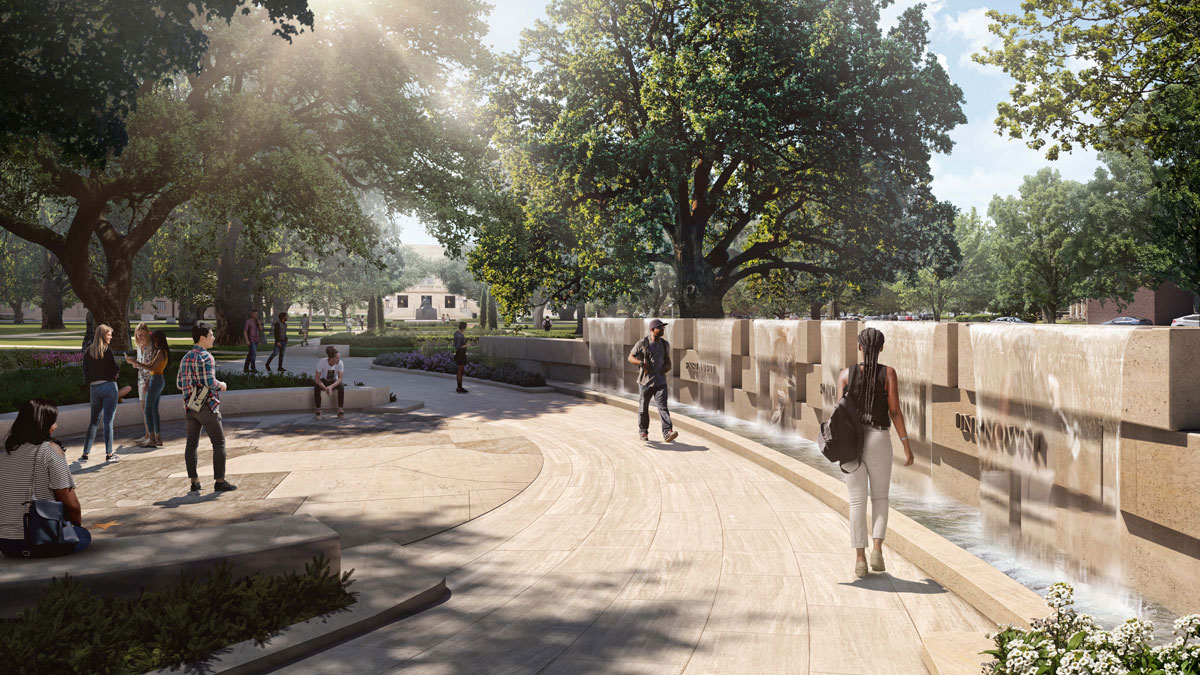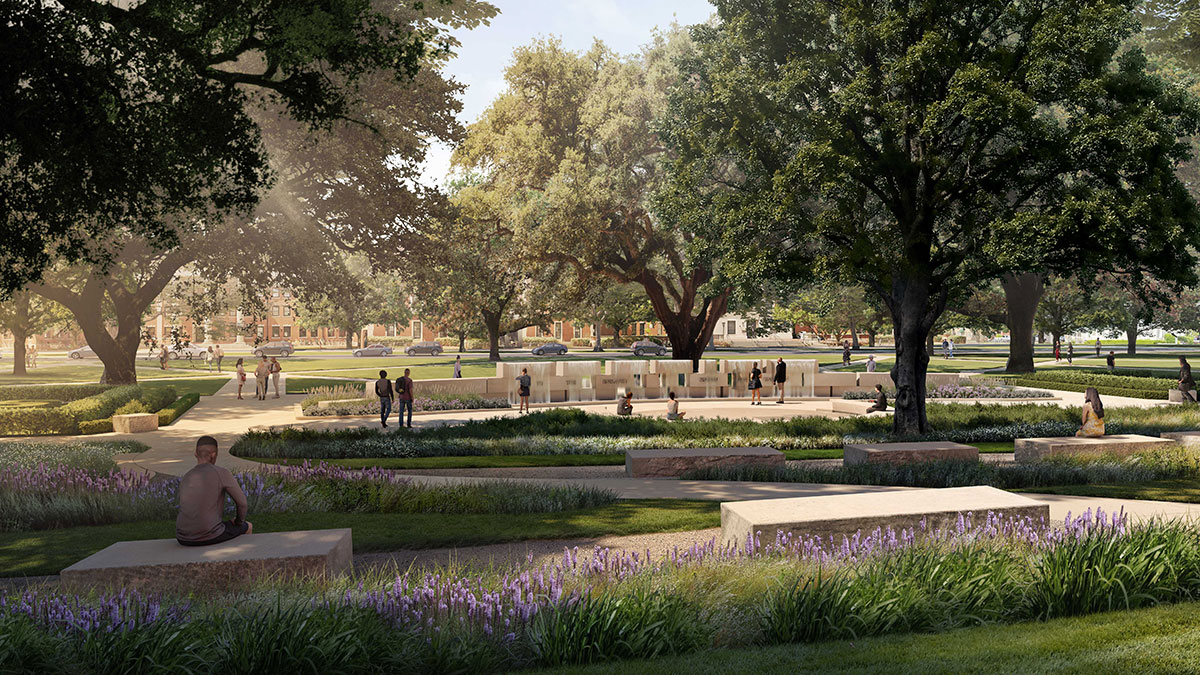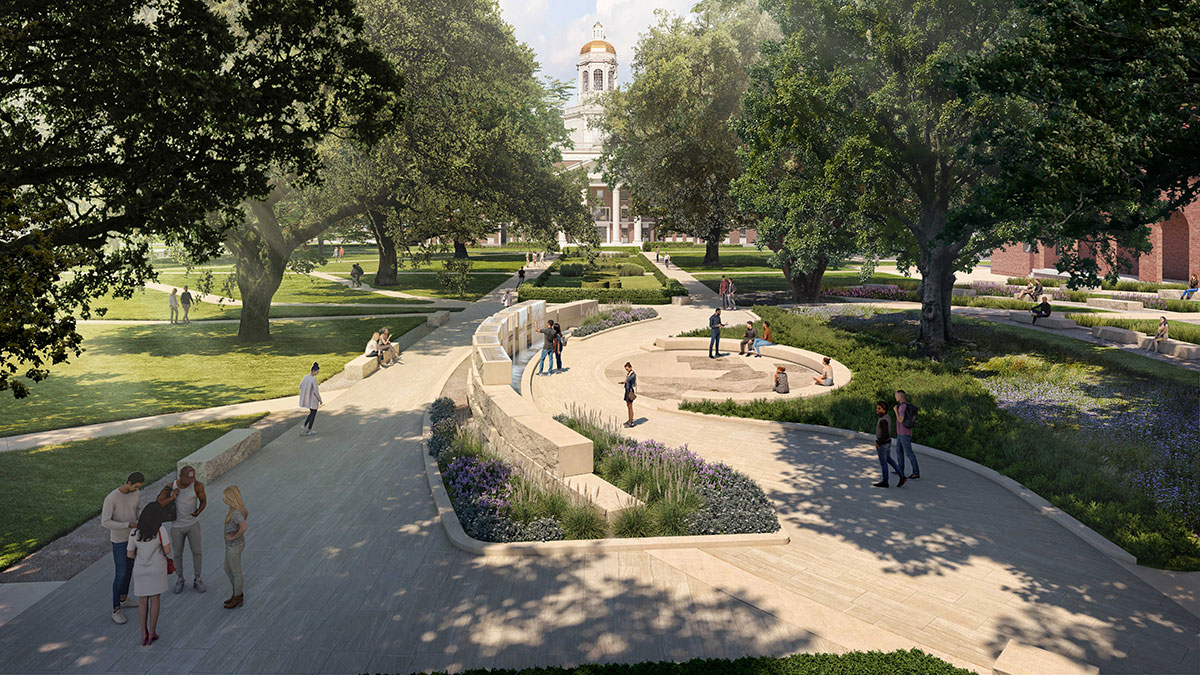‘Monument to Unknown Enslaved’ to help tell a more complete Baylor story

Last year, we wrote about Baylor’s plans to address many of the priorities named by the Commission on Historic Campus Representations — recommendations aimed at more completely telling the history of the university, particularly with regards to some early leaders’ slaveholding past.
Last week, the university released the first detailed renderings of an addition to Founders Mall called the “Monument to the Unknown Enslaved.” Inspired by the limestone used on the original Baylor campus in Independence (which was likely built at least in part by enslaved people), the Monument will have three distinct but connected ways to learn, understand and process Baylor’s history.

A limestone wall will form the Monument’s outer ring, creating a storytelling canvas on both its sides. The wall will be stacked stones with intentional voids between — representing both the unknown enslaved and gaps in Baylor’s history — and will include a cascading water feature. When activated, the waterwall will represent a time of stirring engagement; when off, a time of reflection.
The smaller, inner ring of the Monument will feature a ground-level map of east central Texas, including Washington and McLennan counties (home to Independence and Waco, respectively). The shaded areas on the map will depict the enslaved population density, circa 1860.
The amphitheater-style Resonance Garden between Draper Hall and the Monument will allow students and other visitors to reflect on the information presented in other areas of the Monument through engravings and QR codes. It will also be suitable for small, respectful gatherings.
Created by renowned architectural firm Sasaki with input from the Campus Experience Project Team and student representatives, the Monument is intentionally designed to break up the direct walkways on Founders Mall, symbolically bending the otherwise linear Baylor Line and drawing visitors into the experience. The engraved map will be an impactful image of slavery at the beginning of Baylor’s story, which includes namesake Judge R.E.B. Baylor. (The time capsule currently situated on Founders Mall will be moved to another, still-to-be-determined spot on campus.)

As previously mentioned, the Judge Baylor statue — located near the Monument — will remain in place, but the area around the statue will be enhanced. Limestone will be used as additional signage (telling more of both his story and the university’s founding) is added, along with landscaping and other changes that will allow greater accessibility.
And to highlight more recent history, Baylor will this spring add life-sized bronze statues of the late Rev. Robert Gilbert and Mrs. Barbara Walker, the university’s first Black graduates in 1967. For this addition, Baylor partnered with Benjamin Victor, the only living artist to have three works in the U.S. Capitol’s National Statuary Hall; the statues will be unveiled on April 4 at their new location in front of Tidwell Bible Building.
These updates (the Monument to the Unknown Enslaved, the Judge Baylor additions, and the Gilbert/Walker statues) are generational transformations for the Baylor campus and community — fitting steps as we move forward together through “reckoning, repentance, reconciliation and redemption” and understand more of our shared history.
Sic ’em, Baylor campus!
You might also like:
* Updates to Founders Mall and Quadrangle will more fully tell Baylor’s history (May 2022)
* Baylor to add statues honoring first Black graduates to campus landscape (April 2021)
* 10 things we’ve learned about slavery/racism & Baylor’s history from the Conversation Series (March 2021)

